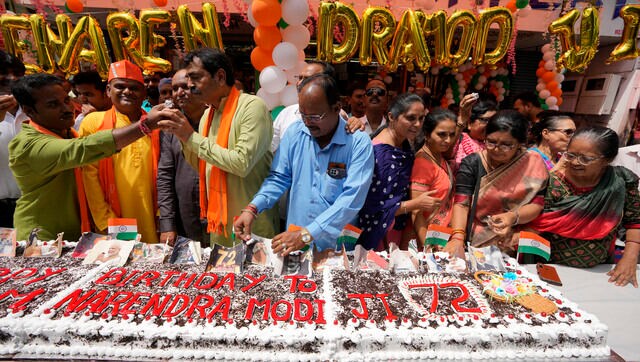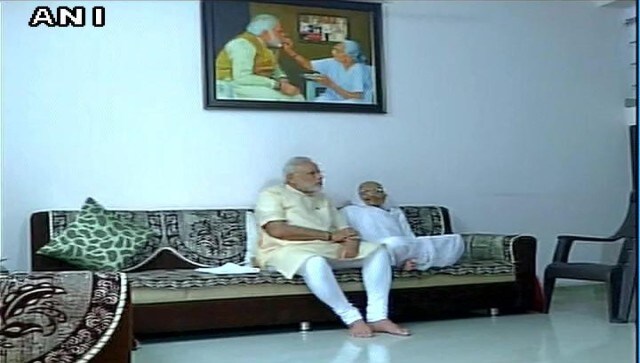5G launch and Draft Telecom Bill: An inflexion point in communications innovation
The pace at which 5G innovation in India has progressed over the past few years is remarkable

Set for 5G. Image courtesy News18
With Prime Minister Narendra Modi set to launch 5G services in a few days at the India Mobile Congress, India is at an inflexion point in communications innovation. Earlier this week I was witness to the setting up of an India-based wireless research and development centre by a global materials science major in Gurgaon. Two aspects of the centre were striking which in many ways tell the story of how this inflexion point came to be. The first was on how the centre was able to obtain an experimental licence quickly to be able to test out its latest innovations targeting inside premises 5G applications. Anecdotally it was shared that India moved much faster to grant these experimental licences when compared to their efforts in the United States. The second aspect that was striking was how India was thinking ahead of the global market to target private, enterprise scale 5G networks and applications.
The recently concluded 5G auctions saw bidding for the same with a major industry group taking up 5G licences for such a private enterprise 5G network. Interestingly the innovations showcased at the centre had precisely these in-premises use cases in mind highlighting how the confluence of policy actions, industry intent and R&D focus all of which are converging to bring about this inflexion point.
The pace at which 5G innovation in India has progressed over the past few years is remarkable starting with the IITs creating a test bed, the drafting of an India-specific 5G standard and the adoption of these considerations by the 3GPP global family of mobile standards. Fuelling this rapid pace of innovation in India are domestic start-ups and telecom gear manufacturing entities across the public-private domains such as Saankhya Labs, Tejas Networks and TSDSI, C-DoT among others. Thought leadership and ecosystem development by IIT Kanpur, IIT Madras and IIT Bombay have been a great boost to this pace of innovation while giving academic heft to India’s efforts to influence global standards. The successful auction of spectrum for 5G services alongside the innovation efforts and the drastically reduced lead time to launch of services are a testimony to the new-found energy and effectiveness within the Telecom Ministry over the past 18 months with the leadership changes at its helm both at the political and at the bureaucratic level. The impact of the changes made by Prime Minister Modi is visible from the resolution of long pending issues of Telcos and BSNL in recent months.
The progressive thinking in the Telecom Ministry is also reflected in the Draft Telecom Bill of 2022, which was recently made public for comments and consultation. The draft bill stands out for both its simplicity and crispness in a language that is easily understood. With convergence in its mind, the draft has also revisited the definition of communication services to include OTT communication services and broadcasting. While there is expected anxiety over this definition, it is in line with the global trends of convergence where traditional silos between telecom, broadcasting and internet services are increasingly becoming irrelevant.
There is, however, a need to exercise caution on the extent to which OTT services ought to be regulated through licensing while ensuring lawful interception for national security and law enforcement reasons. As an example, VOIP services that interconnect with traditional telephony through the common numbering plan could be treated on par with telecom services from a licensing standpoint while app-based OTT communication services that are entirely Internet-based could remain unlicensed but subject to lawful interception. Similar distinction may be made in the case of OTT broadcast services as well while standalone internet streaming remains unlicensed subject to compliance with content guidelines under the IT rules.
The Draft Telecom Bill should also be commended for its focus on R&D and ease of doing business to promote the same. Facilitating experimental licences and lowering barriers to experimentation are extremely crucial if India is to build on its nascent success as an innovation hub for communications technologies of the future. A case in point is the convergence between Direct-to-Mobile Broadcasting, D2M, and 5G. The thought leadership of IIT Kanpur and the technology innovation of start-ups has created a launchpad for India to take the lead in this emerging technology area to define the roadmap for how 5G capable smartphones can directly receive broadcast signals. Such a capability would be of immense strategic value to a nascent digital democracy like India, disintermediating the Internet Streaming Platforms to directly reach consumers on their smartphones.
D2M will also be important to Digital India which has taken to video streaming on a globally unprecedented scale, thanks to the pricing innovation spurred by Reliance Jio, by offloading video traffic to broadcast freeing up data capacity for interactive services. While Europe and the United States are currently undergoing early-stage pilots and are yet to see wide adoption, the opportunity exists for India to set the trajectory for how such adoption could take place across the globe. This however requires a coherent policy approach that ensures UHF spectrum above 520 MHz continues to be available for Direct-to-Mobile Broadcasting for synergies with the global device ecosystem.
By widening the scope of the Universal Service Obligation fund, the draft telecom bill promises to pave the way for increased accessibility to both urban and rural India while potentially making funds available to R&D and Innovation. Predictably there have been murmurs on flawed and misconceived ideas of Net Neutrality, with the draft bill silent on the same and rightly so. With the wide accessibility gap across India there is no meaningful case for India to be constrained by considerations of Net Neutrality. Instead, the priority should be on encouraging innovative approaches of all hues to enable citizens to access digital content and services in the most affordable manner.
Despite the tremendous push towards innovation there is substantial inertia within the machinery of the government to change while disruptive innovations are viewed with suspicion. To overcome this will require a change in both mindset and culture especially at the lower levels of bureaucracy where status quo tends to be privileged over radical changes. Unless a culture of innovation and experimentation is incentivised, many bright ideas that have the potential to change the rules of the game will likely get nipped at an early stage and India will miss the opportunity to take a global leadership position in those areas.
Prime Minister Modi’s clarion call from the ramparts of the Red Fort during his Independence Day Speech for a ‘techade’ of R&D and Innovation through “Jai Anusandhaan” is finding its echo with global R&D in wireless and 5G setting base in India. From Direct to Mobile Broadcasting to Enterprise 5G, Digital India has the opportunity to be aatmanirbhar if policy intent is followed up through timely and concrete action. From advanced optics to IoT in the dairy sector, from cloud-based radio networks to in-stadium live broadcasts, multiple innovative use cases and applications are being developed in India which have the potential to create an expanded ecosystem of innovation stretching all the way from upstream materials sciences to semiconductor manufacturing to downstream communication services and mass scale digital platforms. As the Prime Minister has said, the opportunity is for India to rise to the occasion and grab.
The writer is former CEO, Prasar Bharti. Views expressed are personal.
Disclaimer: Firstpost is part of the Network18 group. Network18 is controlled by Independent Media Trust, of which Reliance Industries is the sole beneficiary.
Read all the Latest News, Trending News, Cricket News, Bollywood News,
India News and Entertainment News here. Follow us on Facebook, Twitter and Instagram.
also read

Best phones under Rs 60,000 (Sept 2022): Apple iPhone 12, Xiaomi 12 Pro 5G to iQOO 9 Pro 5G
Thanks to the arrival of successors and the onset of sale season, we have some great phones for great prices within a budget of Rs 60,000 this month.

'Humbled by affection on birthday': PM Modi thanks people for their greetings and wishes
The prime minister turned 72 on Saturday and marked his birthday by addressing four events covering fields as diverse as wildlife and the launch of logistics policy, as greetings poured in from leaders and other prominent personalities

PM Modi Birthday: Here's how he celebrated it since 2014
Along with other commitments this year, PM Modi is slated to launch the National Logistics Policy and welcome eight cheetahs that are being brought from Namibia
